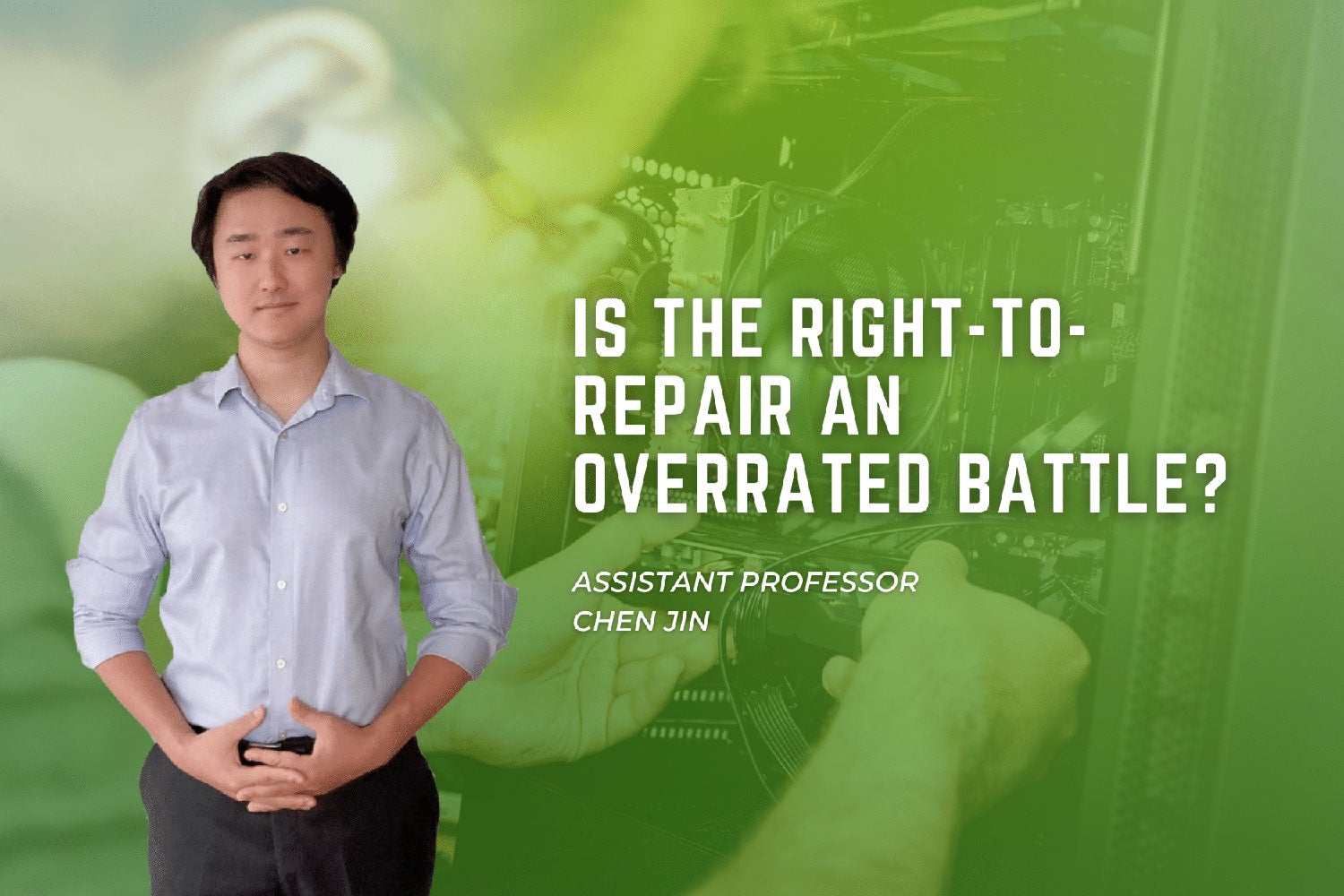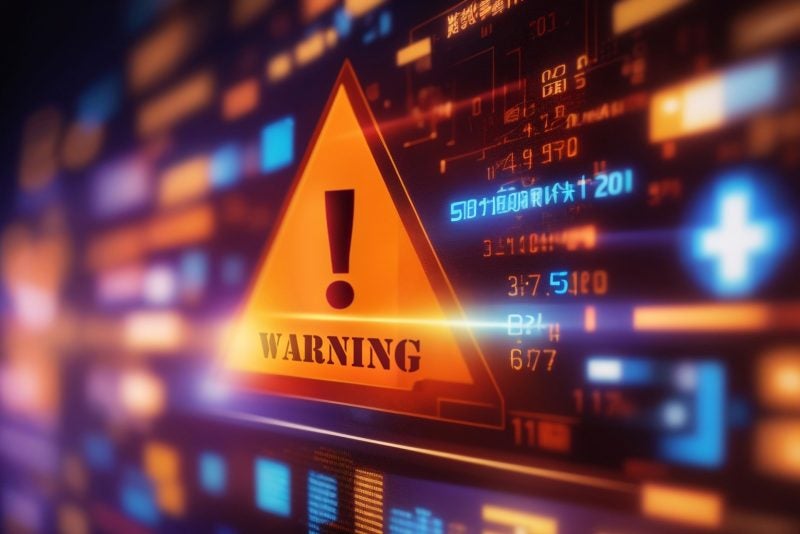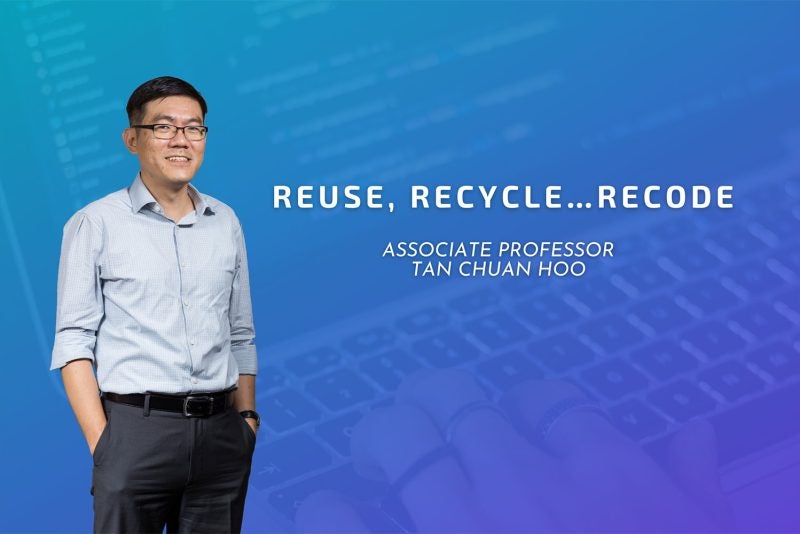For the most part, Henrik Huseby was an average, hardworking man — a small business owner making a modest living repairing iPhones and MacBooks in Ski, a tiny city in Norway with a population of roughly 20,000.
Huseby’s ordinary life, however, turned topsy turvy in 2018 when a letter from Apple appeared out of the blue, accusing him of importing counterfeit phone screens. The charge eventually made its way to the country’s Supreme Court, and culminated with Huseby being ordered to pay Apple nearly 10,800 euros in fines and court fees.
Many critics cried foul, denouncing the charge as a wider bid by the tech giant to discourage independent, third-party players such as Huseby from repairing its products. Incidences like these, they argued, were exactly why the “right to repair” movement is so critical.
The freedom to choose
The premise of the movement is simple: when you purchase something — be it a car, smartphone, or refrigerator — you should have the right to repair it by yourself or take it to a technician of your choice.
Yet, these options are often unfeasible because “big tech firms usually have a monopoly on the repair market,” says Chen Jin, an assistant professor at NUS Computing. Manufacturers employ all sorts of tricks to ensure customers return to them for repairs, for instance withholding spare parts, soldering devices together unnecessarily, or disabling custom software. They argue that keeping repair largely in-house helps maintain product safety while protecting intellectual property rights.
But in the past decade, the right to repair movement has gathered steam, calling on governments to pass legislation to combat this, by requiring manufacturers to share repair information, diagnostic tools, and replacement parts.
“Right to repair activists believe that manufacturers having a monopoly on the repair market is bad, and that more competition will benefit consumers,” explains Jin. The environment could benefit too, with less e-waste generated as people would be more encouraged to mend broken gadgets rather than simply purchase new ones — something that steep repair costs currently deter.
“Conventional wisdom suggests that the right to repair benefits consumers and reduces environmental impact,” says Jin.
But would it really be a clear-cut win-win scenario? Jin wasn’t so sure. Passing such legislation would understandably hurt manufacturers’ profits, but it was unclear how companies would try to mitigate these losses. “How would they adjust prices, especially that of new products? And what are the welfare and environmental implications of such changes?”
“Any assessment of right-to-repair is incomplete without incorporating this pricing perspective,” says Jin. “Yet it’s largely missing in today’s policy debates.”
To fill this knowledge gap, Jin — together with PhD student Cungen Zhu and fellow researcher Luyi Yang, an assistant professor of operations and IT management at the University of California, Berkeley’s Haas School of Business — set out to create a model to analyze the implications of right-to-repair.
Taking a second glance
The results they obtained are illuminating. “Our research challenges conventional wisdom,” says Jin. “What we’re saying is that those intuitive predictions may be true, but hold on a second as it’s not always the case — under some conditions, the consumer and environment can be worse off if a right-to-repair bill is passed.”
The key, he says, is to look at how much it costs to produce the good in question. If something is relatively cheap to make, for example smartphones and microwaves, the new model predicts that a right-to-repair bill will likely see manufacturers lowering the price of their new products.
“Doing so disincentivises repair and resale,” says Jin. “The firm wants consumers to buy the new product instead of fixing a used product.” Slashing fees would also help firms avoid old products cannibalising the sales of new ones. While this benefits buyers, the environment could lose out with more e-waste generated.
In contrast, when production costs are high, the firm’s new goods inevitably come with a steep price tag. To overcome this and stimulate demand, manufacturers are likely to offer free repair services to whet customers’ appetites. This is because of the ‘value enhancement effect,’ i.e., the repair service could make the products last longer and hence, increase the consumers’ valuation of the product.
Since repair is offered free of charge, a right-to-repair legislation — along with its resulting lower repair costs — is unlikely to make much of a difference.
In instances where production costs are intermediate, Jin’s model predicts that the outcome is a combination of the above effects. When right-to-repair is introduced and independent repair costs start to fall, a manufacturer is likely to lower the prices of their new products in order to entice customers away from the repair option (similar to what happens in the low production cost scenario). This benefits customers but may be detrimental to the environment.
But as independent repair costs continue to fall beyond a certain point, this price-slashing option is no longer attractive to manufacturers, he says. In response, manufacturers are likely to switch tacks and raise new product prices while simultaneously offering free repairs (i.e. the high-production cost strategy). “All told, if the use impact of a product is the main contributer to the environmental impact, then a right-to-repair bill in this scenario can create a lose-lose-lose situation that compromises manufacturer profit, reduces consumer surplus, and exacerbates the environmental impact,” says Jin. “That’s despite repair being made easier and more affordable.”
His team’s findings were published earlier this year, as a preprint in the journal Management Science. Next up, the researchers plan to modify their model to be able to analyse a non-monopolist market. “We want to look at the effect of right-to-repair on price competition, for example between Apple and Samsung in the cell phone or electronic device market,” explains Jin.
To him, the topic remains fascinating, not to mention timely — in 2019, Apple launched a new repair programme offering more third-party shops repair tools, parts, and information; while in 2021, the United States, European Union, and British governments introduced right-to-repair laws.
Jin concludes: “Our results tell a cautionary tale and urge legislative authorities to factor in the inextricable link between repair and product markets when they assess the right-to-repair.”
Paper: Right to Repair: Pricing, Welfare and Environmental Implications
































